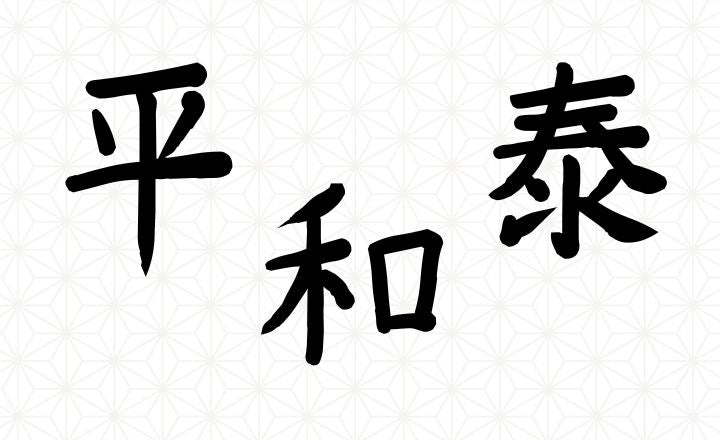
Kanji for Peace: 平, 和, 泰 - The Symbols of Harmony
Share
You might be wondering what are the Japanese symbols for 'Peace'.
In this article, we're diving deep into this universal concept - "peace". The Japanese language encapsulates this serene sentiment through three beautiful kanji: 平, 和, and 泰. By unveiling the meanings, readings, and cultural significance of these characters, we offer you a deeper insight into the richness of Japanese culture and language.
Whether you're seeking to express feelings of tranquility, understand the concept of 'peace' in Japanese, or enhance your language skills, this guide is for you.
Let's dive into the calming and harmonious world of peace, through the lens of Japanese kanji!
Understanding the origin of 平, 和, and 泰
1. Origin of 平 (Peace)
This kanji is composed of two radicals:
- 干 (Dry): Represents drying something out, but in this context, it can symbolize the absence of conflict or strife.
- 丷 (Eight): While originally representing the number eight (八), in this context it contributes to the balanced symmetry of the character, mirroring the meaning of peace.
Collectively, the kanji 平, 'peace', illustrates the sense of equilibrium and lack of conflict, synonymous with peace.
2. Origin of 和 (Harmony, peace)
This kanji is composed of two radicals:
- 禾 (Grain): It symbolizes a grain plant, often associated with a peaceful harvest.
- 口 (Mouth): Represents speaking or words, often associated with communication.
The combination of these two radicals in the kanji 和, 'harmony' or 'peace', can be seen as symbolizing peaceful communication or harmony that leads to a fruitful result, like a good harvest.
3. Origin of 泰 (Peace, safe)
This kanji comprises of three radicals:
- 水 (Water): Typically symbolizes flow or fluidity, here it can be seen as a representation of calmness or tranquility.
- 三 (Three): While originally representing the number three, in this context it can be seen as a representation of balance and harmony.
- 人 (Person): Represents a person, in this context, it can symbolize the presence of peace within an individual.
The kanji 泰, 'peaceful', embodies the concept of a calm and harmonious state, both within an individual and in a broader context.
Next, let's see how to read those kanji and common vocabulary words using them.
But before that, are you learning Japanese but struggling remembering your kanji? Here at Hirakan, we make everyday life products that help you remember your Japanese. Check out our JLPT N5 kanji:
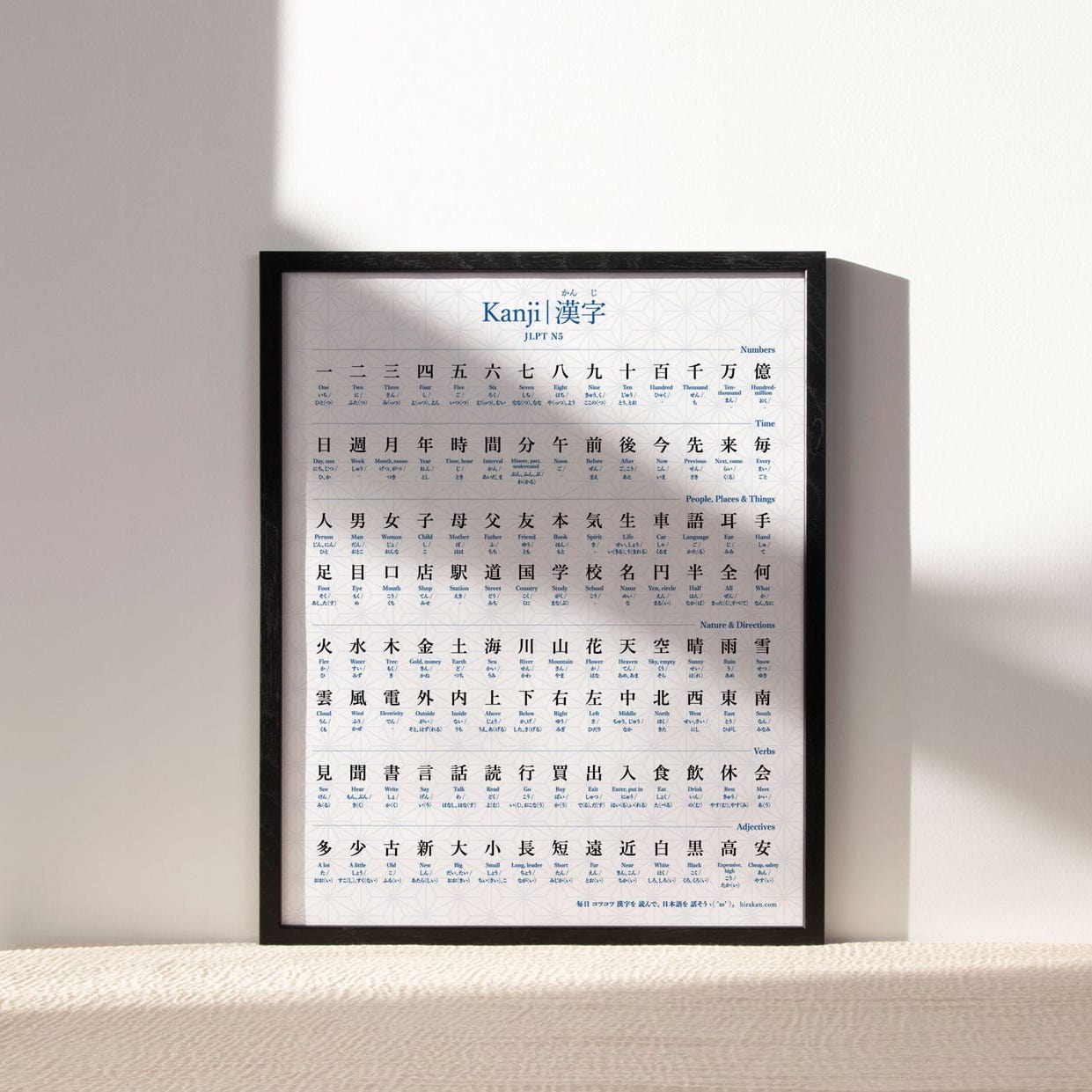
It contains all kanji necessary to pass the JLPT N5. And it makes a pretty stylish wall decor if you ask us. Take a look at the JLPTN N5 poster here!
How to read 平, 和, and 泰
1. 平 (Peace, flat)
平 onyomi and kunyomi readings
| Kanji | Onyomi | Kunyomi |
| 平 | ヘイ - hei | たい(ら) - tai(ra), ひ(ら) - hi(ra) |
Vocabulary words containing 平:
- 平和 (へいわ - heiwa) = peace
- 平等 (びょうどう - byoudou) = equality
- 平日 (へいじつ - heijitsu) = weekday
- 平均 (へいきん - heikin) = average
- 平面 (へいめん - heimen) = flat surface
- 公平 (こうへい - kouhei) = fairness, justice
- 不平 (ふへい - fuhei) = complaint, dissatisfaction
- 一平 (いっぺい - ippei) = everywhere, all over
2. 和 (Peace, harmony, Japanese style)
和 onyomi and kunyomi readings
| Kanji | Onyomi | Kunyomi |
| 和 | ワ - wa | やわ(らぐ), なご(やか) - yawa(ragu), nago(yaka) |
Vocabulary words containing 和:
- 和食 (わしょく - washoku) = Japanese food
- 和服 (わふく - wafuku) = Japanese traditional clothes
- 和解 (わかい - wakai) = reconciliation
- 和歌 (わか - waka) = a type of traditional Japanese poem
- 和風 (わふう - wafuu) = Japanese style
- 昭和 (しょうわ - showa) = Showa era (1926-1989)
- 中和 (ちゅうわ - chuuwa) = neutralization
- 音楽和声 (おんがくわせい - ongakuwasei) = musical harmony
3. 泰 (Peaceful, calm)
泰 onyomi and kunyomi readings
| Kanji | Onyomi | Kunyomi |
| 泰 | タイ - tai | やす(い) - yasu(i) |
Vocabulary words containing 泰:
- 安泰 (あんたい - antai) = peace, tranquility
- 泰然 (たいぜん - taizen) = calm, composed
- 泰山 (たいざん - taizan) = Taishan (a famous mountain in China)
- 泰西 (たいせい - taisei) = the western world
How to use 平, 和, 泰 in Japan
1. Cultural significance and usage of 平 (Peace)
The kanji 平 is often used in Japan to signify a state of peace or tranquility. It can be found in words that convey calmness, balance, and evenness, such as 平和 (heiwa - peace) and 平等 (byoudou - equality). It's also frequently used in names and locations, conveying a sense of peace and serenity.
2. Cultural significance and usage of 和 (Harmony, peace)
The kanji 和 carries significant cultural weight in Japan, embodying a core Japanese value of harmony and peacefulness. The term 和風 (wafuu), for example, describes traditional Japanese style or things that embody a sense of peaceful harmony. It is also used to describe the Japanese style of living in harmony with nature and each other, encapsulated in the concept of 和の心 (wa no kokoro - the spirit of harmony).
3. Cultural significance and usage of 泰 (Peace, safe)
The kanji 泰 is less commonly used in daily Japanese language but carries a profound meaning of peace and safety. It is often seen in historical contexts or classical literature. Also, it's used in the word 泰然 (tairan), which means calm or composed, painting a picture of a tranquil and peaceful state of mind.
Wrap-up
Now you know what the Japanese symbols for 'Peace' are. You've traversed the peaceful landscape of three remarkable kanji: 平, 和, and 泰. These characters intertwine historical significance, various readings, and a spectrum of vocabulary they are part of.
- Understanding 平 can help you express the desire for tranquility and freedom from conflict in Japanese.
- Learning the kanji 和 offers you a window into the deeply embedded Japanese value of harmony and peaceful coexistence.
- Getting acquainted with 泰 opens the door to express a profound sense of safety and serene peace.
Commit to regular practice with these kanji, whether through writing, reading, or by integrating them into your daily language learning. The journey of kanji goes beyond rote memorization - it's about understanding the culture and context that these characters live in. As we've learned today, every kanji holds its own unique story.
See as well:
So, immerse yourself in the peaceful journey of learning kanji. Each character you grasp is not merely a symbol, but a pathway to expressing yourself and understanding a rich cultural heritage. Enjoy your study sessions, and remember - each kanji you master brings you a step closer to language proficiency, allowing you to connect deeper with Japanese culture and its peaceful philosophies.
Related Posts
-
![この・その・あの・どの – Using ‘This / That / Which’ with Nouns in Japanese [JLPT N5]](//hirakan.com/cdn/shop/articles/acd351ada3fe4b04ae86de788a3350b8.jpg?v=1766305268&width=170)
この・その・あの・どの – Using ‘This / That / Which’ with Nouns in Japanese [JLPT N5]
Quick Summary Meaning: この (kono), その (sono), あの (ano), どの (dono) mean “this / that / which” when they come dire...
-
![これ・それ・あれ・どれ – Saying ‘This / That / Which One’ in Japanese [JLPT N5]](//hirakan.com/cdn/shop/articles/this-that.jpg?v=1766305107&width=170)
これ・それ・あれ・どれ – Saying ‘This / That / Which One’ in Japanese [JLPT N5]
Quick Summary Meaning: これ (kore), それ (sore), あれ (are), and どれ (dore) all mean “this / that / which (one)” when you ar...
-
![か~か – Expressing Choices like “A or B” in Japanese [JLPT N5]](//hirakan.com/cdn/shop/articles/choices.jpg?v=1766304827&width=170)
か~か – Expressing Choices like “A or B” in Japanese [JLPT N5]
Quick Summary Meaning: The pattern か~か shows a simple choice: “A or B.” How to Use: Put か after each optio...
-
![~から~まで – Saying “From A to B” in Japanese [JLPT N5]](//hirakan.com/cdn/shop/articles/from-AtoB.jpg?v=1765093560&width=170)
~から~まで – Saying “From A to B” in Japanese [JLPT N5]
Quick Summary Meaning: ~から~まで shows the starting point and ending point of something: “from A to B.” It is ofte...
-
![まで – Expressing “Until” and “Up To” in Japanese [JLPT N5]](//hirakan.com/cdn/shop/articles/until-up-to.jpg?v=1765093405&width=170)
まで – Expressing “Until” and “Up To” in Japanese [JLPT N5]
Quick Summary Meaning: まで (made) means “until” or “up to” and shows a limit of time, place, number, or even act...
-
![から – Expressing “Because” and “From/Since” in Japanese [JLPT N5]](//hirakan.com/cdn/shop/articles/because-from_since.jpg?v=1765093285&width=170)
から – Expressing “Because” and “From/Since” in Japanese [JLPT N5]
Quick Summary Meaning: から shows a reason (“because”) or a starting point (“from / since”). How to Use: Put...
-
![や – Listing Examples with “And, Among Others” in Japanese [JLPT N5]](//hirakan.com/cdn/shop/articles/and.jpg?v=1765093138&width=170)
や – Listing Examples with “And, Among Others” in Japanese [JLPT N5]
Quick Summary Meaning: や connects two or more nouns and means “and” or “among other things.” It shows that your lis...
-
![か – Forming Questions and Saying “Or” in Japanese [JLPT N5]](//hirakan.com/cdn/shop/articles/ka-questions.jpg?v=1763787134&width=170)
か – Forming Questions and Saying “Or” in Japanese [JLPT N5]
Quick Summary Meaning: The particle か turns a sentence into a question, or can mean “or” when choosing between thin...
-
![も – Saying “Also” and “Too” in Japanese [JLPT N5]](//hirakan.com/cdn/shop/articles/mo-also-too_99f908e6-78d0-4f82-8319-391ef42764bc.jpg?v=1763787251&width=170)
も – Saying “Also” and “Too” in Japanese [JLPT N5]
Quick Summary Meaning: The particle も means “also,” “too,” or “even.” It shows that something is the same as someth...
-
![と – Linking 'And', 'With', and Quotations in Japanese [JLPT N5]](//hirakan.com/cdn/shop/articles/to-and-with-quotation.jpg?v=1763265110&width=170)
と – Linking 'And', 'With', and Quotations in Japanese [JLPT N5]
Quick Summary Meaning: と links things like “A and B,” marks doing something with someone, and shows a quotation (“…,”...
-
![で – Marking Where and How an Action Happens in Japanese [JLPT N5]](//hirakan.com/cdn/shop/articles/de-where-how-action-happens.jpg?v=1763264973&width=170)
で – Marking Where and How an Action Happens in Japanese [JLPT N5]
Quick Summary Meaning: で marks the location where an action happens or the means/tool/method used to do something...
-
![へ – Marking Direction ‘Toward’ in Japanese [JLPT N5]](//hirakan.com/cdn/shop/articles/he-marking-direction.jpg?v=1762667986&width=170)
へ – Marking Direction ‘Toward’ in Japanese [JLPT N5]
Quick Summary Meaning: The particle へ marks direction or “toward” a place or person. It points where something is hea...
-
![に – Marking Time, Destinations, and Recipients in Japanese [JLPT N5]](//hirakan.com/cdn/shop/articles/ni-marking-destination.jpg?v=1762667846&width=170)
に – Marking Time, Destinations, and Recipients in Japanese [JLPT N5]
Quick Summary Meaning: The particle に marks a point in time (at/on), a destination you reach (to/into), or a target/r...
-
![の – Possession and Noun Linking in Japanese [JLPT N5]](//hirakan.com/cdn/shop/articles/no-possession-and-noun-linking.jpg?v=1761961297&width=170)
の – Possession and Noun Linking in Japanese [JLPT N5]
Quick Summary Meaning: Links two nouns to show possession, belonging, or description. Often reads as “’s” or “of....
-
![を – Marking the Direct Object in Japanese [JLPT N5]](//hirakan.com/cdn/shop/articles/o-direct-object.jpg?v=1761960990&width=170)
を – Marking the Direct Object in Japanese [JLPT N5]
Quick Summary Meaning: を marks the direct object — the thing that receives the action of a verb. It’s pronounced ...
-
![が – Marking the Subject ('Who/What') in Japanese [JLPT N5]](//hirakan.com/cdn/shop/articles/ga-subject-marker_60f30f70-6ca5-47ee-9a00-3646195d7d3c.jpg?v=1761386355&width=170)
が – Marking the Subject ('Who/What') in Japanese [JLPT N5]
Quick Summary Meaning: The particle が marks the subject of a sentence and highlights new or focused information (an...
-
![は (wa) – Topic Marker and Contrast in Japanese [JLPT N5]](//hirakan.com/cdn/shop/articles/wa-topic-marker.jpg?v=1761385996&width=170)
は (wa) – Topic Marker and Contrast in Japanese [JLPT N5]
Quick Summary Meaning: Marks the topic of the sentence — what you’re talking about. Often feels like “as for...” in E...
-
![じゃない・ではありません – Expressing 'Is/Was Not' in Japanese [JLPT N5]](//hirakan.com/cdn/shop/articles/janai-dehaarimasen_2594963b-531e-4f4d-a9b0-361010e0a720.jpg?v=1760865884&width=170)
じゃない・ではありません – Expressing 'Is/Was Not' in Japanese [JLPT N5]
Quick Summary Meaning: The negative of the copula “to be.” Say “is not” or “was not” with nouns and na-adjectives. Ho...
-
![だ・です/だった・でした – Saying ‘to be’ in Japanese [JLPT N5]](//hirakan.com/cdn/shop/articles/da-desu-datta-deshita_58bbc732-53fd-48da-83c7-4e477e7cc0b2.jpg?v=1760864506&width=170)
だ・です/だった・でした – Saying ‘to be’ in Japanese [JLPT N5]
Quick Summary Meaning: The Japanese copula — the basic “to be.” It links a topic to a noun or a na-adjective to state...
-
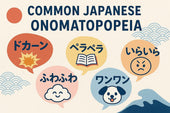
Common Japanese Onomatopoeia: Essential Words You’ll Hear Everywhere
If you spend any time in Japan, you’ll hear onomatopoeia everywhere: on TV, in everyday conversations, in manga, and ...
-

How to Say “To Increase” and “To Decrease” in Japanese: With Examples
You've noticed there are multiple ways to say “to increase” or "to decrease" in Japanese. Between transitive and intr...
-

How to Say "Police Officer" in Japanese: Common Terms and Slang
There are several ways to say "police officer" in Japanese, and each one has a different level of formality and usage...
-
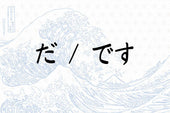
Understanding だ (da) and です (desu) in Japanese: Meaning and Usage
When learning Japanese, one of the first things you’ll come across is だ (da) and です (desu). These words don’t have a ...
-
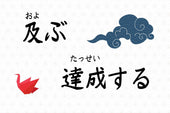
Difference Between 及ぶ (およぶ) and 達成する (たっせいする)
Both 及ぶ and 達成する can relate to "reaching" or "achieving" something, but they have distinct nuances and usage contexts...
-

JLPT N5 Study Guide: A Beginner's Roadmap to Acing the Test
If you’ve just started learning Japanese and are aiming to ace the JLPT N5, you’ll need a solid study guide to help y...
-

Beginner's Guide to Japanese Particles: Learn the Basics
TL;DR: Japanese particles are crucial for structuring sentences, acting like conjunctions or prepositions in English...
-

JLPT N5 Vocabulary List - All 748 Words You Need to Know
Vocabulary is the foundation of any language, and Japanese is no exception. The more you know, the better. Over time ...
-
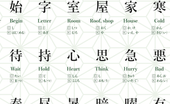
JLPT N4 Kanij List - All 176 Characters You Need To Know
After mastering the JLPT N5 kanji, you're ready to take your Japanese kanji game to the next level. JLPT N4. Let's go...
-
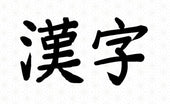
Kanji For Kanji - 漢字
Inception time. Which kanji compose the kanji of "kanji"? The kanji for "kanji" is actually pretty straightforward. I...
-

How to Memorize Katakana Easily: 9 Tips for Beginners
For those diving into Japanese, mastering hiragana and katakana is the first significant challenge. While hiragana o...
-
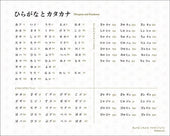
Complete Hiragana and Katakana Chart With All 112 Characters
The very first step for everybody who wants to learn Japanese is to study the hiragana and katakana chart (before lea...
-
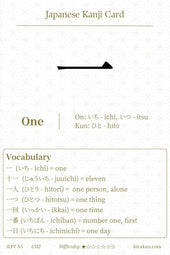
JLPT N5 Kanji: Kanji For One 一 (ichi)
Probably one the most simple kanji to remember, the kanji for 'one' is simply written '一'. Let's see its readings and...
-
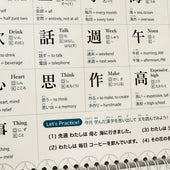
How Long Does It Take to Learn Kanji? A Beginner's Guide
Ask any Japanese student what's the scariest part of learning the language, and they'll say kanji. And they're righ...
-
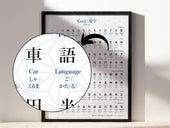
Is it Necessary to Learn Kanji? The Last Answer You'll Ever Need
Many beginners in Japanese wonder whether they should really learn kanji. I know this, because I also wondered when s...
-

How Long Does it Take to Learn Hiragana and Katakana?
As a beginner in Japanese, your first step is diving into the alphabets of Hiragana and Katakana. These are the build...
-

13 Best YouTube Channels to Learn Japanese, From Beginner to Intermediate
YouTube can be an incredible resource for learning Japanese. And best of all, it's free. So we've compiled a list of ...
-
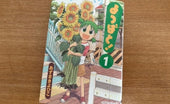
Top 10 Manga for Japanese Language Learners: From Beginners to Intermediates!
If you're learning Japanese, chances are you're interested in manga. So instead of reading texts about Tanaka-san s...
-
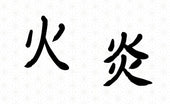
Kanji for 'Fire' in Japanese: 火 or 炎?
Welcome to our enlightening exploration of Japanese kanji! Today, we're igniting our understanding of a primal force ...
-
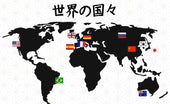
The Complete Guide to Country Names in Japanese: Say and Pronounce Them Right!
Whether you're planning a trip, learning Japanese, or just curious about how different countries are represented in a...
-
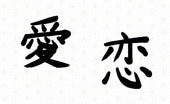
Kanji for 'Love': How and When to Use 愛 and 恋
Welcome to our journey into the world of Japanese kanji! Today, we're delving into one of the most heartwarming and p...
-
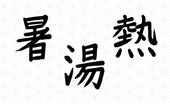
Kanji for 'Hot' in Japanese: 暑, 湯, and 熱 - A Comprehensive Guide
Welcome to our journey into the world of Japanese kanji! Today, we're going to delve into an exciting and essential c...
-
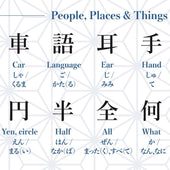
JLPT N5 Kanji List - All 112 Characters You Need To Know
Below we've listed all 112 JLPT N5 level kanji along with their English meaning, readings, and two accompanying vocab...

![この・その・あの・どの – Using ‘This / That / Which’ with Nouns in Japanese [JLPT N5]](http://hirakan.com/cdn/shop/articles/acd351ada3fe4b04ae86de788a3350b8.jpg?v=1766305268&width=170)
![これ・それ・あれ・どれ – Saying ‘This / That / Which One’ in Japanese [JLPT N5]](http://hirakan.com/cdn/shop/articles/this-that.jpg?v=1766305107&width=170)
![か~か – Expressing Choices like “A or B” in Japanese [JLPT N5]](http://hirakan.com/cdn/shop/articles/choices.jpg?v=1766304827&width=170)
![~から~まで – Saying “From A to B” in Japanese [JLPT N5]](http://hirakan.com/cdn/shop/articles/from-AtoB.jpg?v=1765093560&width=170)
![まで – Expressing “Until” and “Up To” in Japanese [JLPT N5]](http://hirakan.com/cdn/shop/articles/until-up-to.jpg?v=1765093405&width=170)
![から – Expressing “Because” and “From/Since” in Japanese [JLPT N5]](http://hirakan.com/cdn/shop/articles/because-from_since.jpg?v=1765093285&width=170)
![や – Listing Examples with “And, Among Others” in Japanese [JLPT N5]](http://hirakan.com/cdn/shop/articles/and.jpg?v=1765093138&width=170)
![か – Forming Questions and Saying “Or” in Japanese [JLPT N5]](http://hirakan.com/cdn/shop/articles/ka-questions.jpg?v=1763787134&width=170)
![も – Saying “Also” and “Too” in Japanese [JLPT N5]](http://hirakan.com/cdn/shop/articles/mo-also-too_99f908e6-78d0-4f82-8319-391ef42764bc.jpg?v=1763787251&width=170)
![と – Linking 'And', 'With', and Quotations in Japanese [JLPT N5]](http://hirakan.com/cdn/shop/articles/to-and-with-quotation.jpg?v=1763265110&width=170)
![で – Marking Where and How an Action Happens in Japanese [JLPT N5]](http://hirakan.com/cdn/shop/articles/de-where-how-action-happens.jpg?v=1763264973&width=170)
![へ – Marking Direction ‘Toward’ in Japanese [JLPT N5]](http://hirakan.com/cdn/shop/articles/he-marking-direction.jpg?v=1762667986&width=170)
![に – Marking Time, Destinations, and Recipients in Japanese [JLPT N5]](http://hirakan.com/cdn/shop/articles/ni-marking-destination.jpg?v=1762667846&width=170)
![の – Possession and Noun Linking in Japanese [JLPT N5]](http://hirakan.com/cdn/shop/articles/no-possession-and-noun-linking.jpg?v=1761961297&width=170)
![を – Marking the Direct Object in Japanese [JLPT N5]](http://hirakan.com/cdn/shop/articles/o-direct-object.jpg?v=1761960990&width=170)
![が – Marking the Subject ('Who/What') in Japanese [JLPT N5]](http://hirakan.com/cdn/shop/articles/ga-subject-marker_60f30f70-6ca5-47ee-9a00-3646195d7d3c.jpg?v=1761386355&width=170)
![は (wa) – Topic Marker and Contrast in Japanese [JLPT N5]](http://hirakan.com/cdn/shop/articles/wa-topic-marker.jpg?v=1761385996&width=170)
![じゃない・ではありません – Expressing 'Is/Was Not' in Japanese [JLPT N5]](http://hirakan.com/cdn/shop/articles/janai-dehaarimasen_2594963b-531e-4f4d-a9b0-361010e0a720.jpg?v=1760865884&width=170)
![だ・です/だった・でした – Saying ‘to be’ in Japanese [JLPT N5]](http://hirakan.com/cdn/shop/articles/da-desu-datta-deshita_58bbc732-53fd-48da-83c7-4e477e7cc0b2.jpg?v=1760864506&width=170)






















